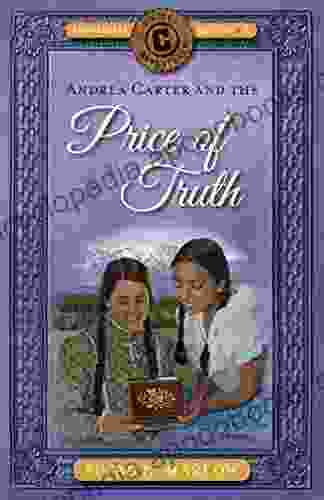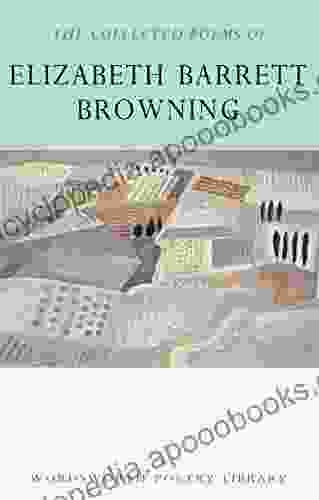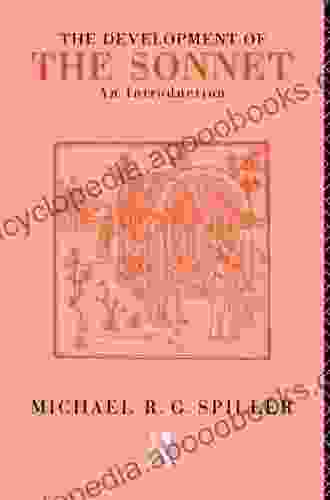The Development of the Sonnet: An Introduction

4.5 out of 5
| Language | : | English |
| File size | : | 507 KB |
| Text-to-Speech | : | Enabled |
| Screen Reader | : | Supported |
| Enhanced typesetting | : | Enabled |
| Print length | : | 256 pages |
Unveiling the Sonnet's Enduring Legacy
The sonnet, a timeless literary form, has captivated readers and writers alike for centuries. Its concise yet evocative structure, with its intricate rhyme scheme and thoughtful exploration of love, beauty, and mortality, has made it a beloved staple in the world of poetry.
This comprehensive guide offers a captivating exploration of the sonnet's rich history, tracing its evolution from its humble beginnings in medieval Italy to its enduring presence in contemporary literature. Through insightful analysis and engaging examples, we delve into the sonnet's enchanting form, timeless themes, and profound impact on literature and culture.
The Sonnet's Origins: A Poetic Tapestry Unwoven
The sonnet's roots lie in the vibrant courts of 13th-century Sicily, where troubadours crafted love songs known as "sonetti." These early sonnets, often accompanied by music, expressed the poet's ardent affections and yearnings. As the form traveled northward to Florence, it underwent a significant transformation under the pen of Guido Cavalcanti, who introduced a more philosophical and introspective tone.
Yet, it was Francesco Petrarca, known as Petrarch, who truly shaped the sonnet into the form we know today. His sonnets, addressed to his beloved Laura, became models of elegance and emotional depth. Petrarch's sonnets featured a specific rhyme scheme and a division into two parts, known as the octave and the sestet. This structure, along with Petrarch's exploration of unrequited love and the complexities of human desire, established the sonnet as a formidable force in European literature.
Mastering the Sonnet's Form: A Blueprint for Poetic Expression
The sonnet's enduring appeal lies in its intricate form, which provides a structured framework for poetic expression. Traditional sonnets adhere to a strict rhyme scheme and meter, creating a sense of unity and harmony.
The most common sonnet form is the Petrarchan sonnet, named after its architect, Francesco Petrarca. Petrarchan sonnets consist of an octave (eight lines) followed by a sestet (six lines). The octave typically presents a problem or a question, while the sestet offers a resolution or a reflection.
Another popular variation is the Shakespearean sonnet, developed by the legendary English playwright William Shakespeare. Shakespearean sonnets consist of three quatrains (four-line stanzas) followed by a final couplet (two-line stanza). This structure allows for a more dynamic exploration of a central theme or idea, often with a dramatic shift or turn in the final couplet.
Exploring the Sonnet's Timeless Themes: A Mirror of Human Experience
Throughout its long history, the sonnet has explored a wide range of timeless themes that resonate deeply with the human experience. Love, in all its complexities and contradictions, has been a central preoccupation of sonneteers from Petrarch to Shakespeare and beyond.
Beauty and the fleeting nature of time are other enduring themes in sonnet literature. Poets have captured the ephemeral beauty of the natural world and the human form, while also lamenting the inevitable passage of time and the loss of youth and vitality.
The sonnet has also proven to be a powerful medium for exploring philosophical and spiritual questions. Sonneteers have grappled with the nature of existence, the meaning of life, and the search for truth and understanding.
The Sonnet's Impact on Literature and Culture: A Literary Legacy
The sonnet has had a profound impact on the development of literature and culture. Its influence can be seen in various literary genres, including drama, fiction, and essays.
William Shakespeare's sonnets, with their exploration of love, beauty, and mortality, have become some of the most celebrated and influential works in English literature. Other notable sonneteers include John Keats, Elizabeth Barrett Browning, and Pablo Neruda, whose sonnets have enriched world literature with their lyrical beauty and emotional depth.
The sonnet has also inspired musicians, artists, and filmmakers. Its compact form and evocative language have provided a rich source of inspiration for composers, painters, and directors alike.
Discovering the Sonnet's Modern Manifestations: A Contemporary Renaissance
In contemporary literature, the sonnet continues to thrive and evolve. While traditional forms and themes still hold sway, contemporary sonneteers are pushing the boundaries of the form, exploring new possibilities and challenging conventional notions.
Poets such as Billy Collins, Louise Glück, and Terrance Hayes have embraced the sonnet as a means to explore personal experiences, social issues, and the complexities of modern life. Their sonnets often feature unconventional rhyme schemes, colloquial language, and a focus on contemporary concerns.
The sonnet's adaptability and enduring appeal ensure its continued relevance in the 21st century. Whether in its traditional or contemporary manifestations, the sonnet remains a potent form for poetic expression, capable of capturing the complexities of the human experience and stirring the emotions of readers worldwide.
Embark on a Sonnet-Filled Journey: A Guide for the Curious
This guide has provided a comprehensive overview of the sonnet, from its humble origins to its enduring legacy. As you delve deeper into the world of sonnets, we encourage you to explore the following resources:
- Read sonnets by famous poets such as Petrarch, Shakespeare, and Elizabeth Barrett Browning.
- Attend poetry readings and workshops where sonnets are discussed and analyzed.
- Experiment with writing your own sonnets, exploring different rhyme schemes and themes.
- Explore online resources and databases dedicated to sonnets and sonnet scholarship.
By immersing yourself in the sonnet's rich tapestry, you will gain a deeper appreciation for its enduring power and its ability to capture the essence of human experience. Whether you are a seasoned poetry enthusiast or a curious newcomer, the sonnet's timeless allure awaits your discovery.
4.5 out of 5
| Language | : | English |
| File size | : | 507 KB |
| Text-to-Speech | : | Enabled |
| Screen Reader | : | Supported |
| Enhanced typesetting | : | Enabled |
| Print length | : | 256 pages |
Do you want to contribute by writing guest posts on this blog?
Please contact us and send us a resume of previous articles that you have written.
 Book
Book Novel
Novel Page
Page Chapter
Chapter Text
Text Story
Story Genre
Genre Reader
Reader Library
Library Paperback
Paperback E-book
E-book Magazine
Magazine Newspaper
Newspaper Paragraph
Paragraph Sentence
Sentence Bookmark
Bookmark Shelf
Shelf Glossary
Glossary Bibliography
Bibliography Foreword
Foreword Preface
Preface Synopsis
Synopsis Annotation
Annotation Footnote
Footnote Manuscript
Manuscript Scroll
Scroll Codex
Codex Tome
Tome Bestseller
Bestseller Classics
Classics Library card
Library card Narrative
Narrative Biography
Biography Autobiography
Autobiography Memoir
Memoir Reference
Reference Encyclopedia
Encyclopedia 7th Edition Kindle Edition
7th Edition Kindle Edition 2007th Edition Kindle Edition
2007th Edition Kindle Edition Alisha Black
Alisha Black Tara Greaney
Tara Greaney A J Parr
A J Parr Ted Cruz
Ted Cruz 4th Edition Kindle Edition
4th Edition Kindle Edition 1st Ed 2020 Edition
1st Ed 2020 Edition Jay Rubenstein
Jay Rubenstein Vasileios Yfantis
Vasileios Yfantis Amanda Boyarshinov
Amanda Boyarshinov Alan B Krueger
Alan B Krueger Johannes Wierz
Johannes Wierz Ava Benton
Ava Benton Barry C Burden
Barry C Burden Kristin Hersh
Kristin Hersh Katherine Mader
Katherine Mader Peter Day
Peter Day Al Kingsley
Al Kingsley Tom Stefanick
Tom Stefanick
Light bulbAdvertise smarter! Our strategic ad space ensures maximum exposure. Reserve your spot today!

 Milan KunderaUnveiling the Secrets of the Crusades: The Autobiography and Manifesto of a...
Milan KunderaUnveiling the Secrets of the Crusades: The Autobiography and Manifesto of a...
 Dwayne MitchellUnveiling the Power of Citizen Media: The Routledge Encyclopedia of Citizen...
Dwayne MitchellUnveiling the Power of Citizen Media: The Routledge Encyclopedia of Citizen... T.S. EliotFollow ·9.8k
T.S. EliotFollow ·9.8k Cody RussellFollow ·16.6k
Cody RussellFollow ·16.6k Xavier BellFollow ·3k
Xavier BellFollow ·3k Stuart BlairFollow ·10.1k
Stuart BlairFollow ·10.1k William GoldingFollow ·15.8k
William GoldingFollow ·15.8k Shannon SimmonsFollow ·16k
Shannon SimmonsFollow ·16k Franklin BellFollow ·5.5k
Franklin BellFollow ·5.5k Gabriel BlairFollow ·13.3k
Gabriel BlairFollow ·13.3k

 Jacob Hayes
Jacob HayesUnlock the Power of Microsoft Word: A Comprehensive Guide...
Microsoft Word is a widely used word...

 Hunter Mitchell
Hunter MitchellAndrea Carter and the Price of Truth: A Thrilling...
Get ready for an unforgettable...

 Ivan Turner
Ivan TurnerTrading Jeff and His Dog: An Unforgettable Adventure of...
Get ready for an emotional rollercoaster...

 Langston Hughes
Langston HughesGo Viral TikTok: The Ultimate Guide to Gaining 100K...
TikTok has emerged as a social...

 Ibrahim Blair
Ibrahim BlairUnveil the Enchanting Realm of Short Fiction: Dive into...
Delve into a Literary Tapestry of...

 Tennessee Williams
Tennessee WilliamsUnveil the Enchanting World of Elizabeth Barrett...
A Poetic Tapestry of Love, Loss, and...
4.5 out of 5
| Language | : | English |
| File size | : | 507 KB |
| Text-to-Speech | : | Enabled |
| Screen Reader | : | Supported |
| Enhanced typesetting | : | Enabled |
| Print length | : | 256 pages |







